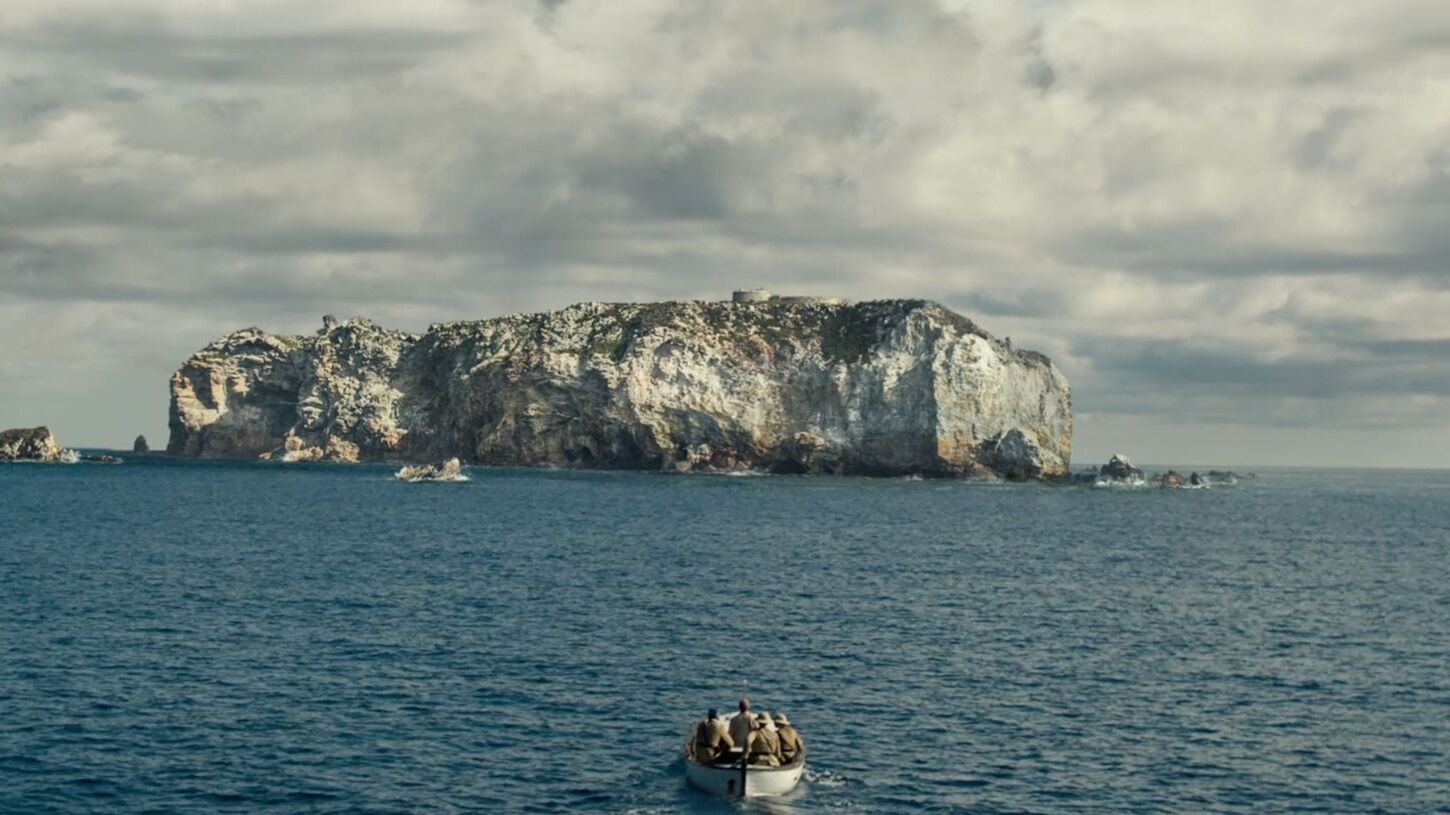
Devils Island is one of the most infamous places in history. Located off the coast of French Guiana, it was part of the French penal colony known as the Devil's Island Penal Colony. This remote island served as a prison for political prisoners, hardened criminals, and anyone the French government deemed dangerous. Devils Island gained notoriety for its harsh conditions, brutal treatment of inmates, and high mortality rate. Many prisoners never made it off the island alive. Despite its grim past, the island has a fascinating history that continues to intrigue people today. Ready to learn more? Here are 35 facts about Devils Island that will give you a deeper understanding of its dark legacy.
Key Takeaways:
- Devil's Island, part of the Îles du Salut in French Guiana, was a brutal penal colony for nearly 100 years, known for its harsh conditions, high mortality rate, and famous prisoner, Captain Alfred Dreyfus.
- Despite its dark history, Devil's Island now serves as a tourist attraction and a symbol of resilience, reminding us of the potential for cruelty and injustice within the penal system.
The Infamous History of Devil's Island
Devil's Island, part of the Îles du Salut in French Guiana, is notorious for its brutal history as a penal colony. Here are some intriguing facts about this infamous place.
-
Devil's Island was established as a penal colony by Emperor Napoleon III in 1852. It was intended to house political prisoners and later expanded to include hardened criminals.
-
The island is one of three in the Îles du Salut, or Salvation Islands. The other two are Île Royale and Île Saint-Joseph.
-
Devil's Island's official name is Île du Diable. The French name translates directly to "Devil's Island."
-
The penal colony operated for nearly 100 years, closing in 1953. During this time, it gained a reputation for its harsh conditions and high mortality rate.
-
The island's most famous prisoner was Captain Alfred Dreyfus. Wrongly accused of treason, Dreyfus was imprisoned from 1895 to 1899.
-
The Dreyfus Affair became a major political scandal in France. It highlighted issues of anti-Semitism and miscarriages of justice.
-
Prisoners faced extreme isolation and harsh tropical conditions. Many succumbed to diseases like malaria and yellow fever.
-
Escape from Devil's Island was nearly impossible. The surrounding shark-infested waters and strong currents deterred many attempts.
-
The penal colony was divided into different sections. Île Royale housed the administrative offices, Île Saint-Joseph held the most dangerous criminals, and Île du Diable was reserved for political prisoners.
-
Prisoners were subjected to forced labor. They worked on infrastructure projects like road building and maintenance.
Life on Devil's Island
Living conditions on Devil's Island were notoriously brutal. Here are some facts that shed light on the daily life of its prisoners.
-
Prisoners lived in small, cramped cells. These cells often lacked proper ventilation and sanitation.
-
Food rations were meager and often spoiled. Malnutrition was a common issue among inmates.
-
Guards were known for their cruelty. Physical punishment and psychological torment were routine.
-
Medical care was virtually non-existent. Many prisoners died from untreated illnesses and injuries.
-
Prisoners were allowed minimal contact with the outside world. Letters were censored, and visits were rare.
-
Isolation was a common punishment. Inmates could be confined to solitary cells for weeks or months.
-
Prisoners were required to wear uniforms. These uniforms were often tattered and inadequate for the tropical climate.
-
Escape attempts were met with severe consequences. Those caught faced extended sentences or execution.
-
The island's harsh environment added to the prisoners' suffering. The tropical heat, humidity, and insects made life unbearable.
-
Despite the conditions, some prisoners managed to form friendships. These bonds provided some emotional support in an otherwise bleak existence.
The Legacy of Devil's Island
Devil's Island has left a lasting legacy, both in popular culture and historical memory. Here are some facts about its impact.
-
The story of Devil's Island has been depicted in numerous books and films. One of the most famous is "Papillon," based on the memoirs of Henri Charrière.
-
Henri Charrière claimed to have escaped from Devil's Island. His book "Papillon" details his daring escape and subsequent adventures.
-
The island is now a tourist attraction. Visitors can tour the remains of the prison buildings and learn about its history.
-
Devil's Island is part of the Guiana Space Centre. The nearby Île Royale houses facilities for the European Space Agency.
-
The island's history is a reminder of the brutal realities of colonialism. It highlights the exploitation and suffering of prisoners under French rule.
-
The penal colony's closure was part of a broader movement to end such institutions. Many countries began to reform their prison systems in the mid-20th century.
-
Devil's Island has become a symbol of resilience and survival. The stories of those who endured its hardships continue to inspire.
-
The island's natural beauty contrasts with its dark history. Lush vegetation and scenic views mask the suffering that once took place there.
-
The French government has preserved the island as a historical site. Efforts have been made to maintain the prison buildings and other structures.
-
Devil's Island serves as a cautionary tale. It reminds us of the potential for cruelty and injustice within the penal system.
Fascinating Tidbits about Devil's Island
Beyond its grim history, Devil's Island holds some lesser-known facts that are equally intriguing.
-
The island is home to a variety of wildlife. Monkeys, birds, and other animals now inhabit the area.
-
The name "Devil's Island" was meant to deter escape. The ominous name added to the island's fearsome reputation.
-
The island's isolation made it a perfect prison. Its remote location ensured that prisoners were cut off from the outside world.
-
Devil's Island was not the only penal colony in French Guiana. Other sites included Saint-Laurent-du-Maroni and the Îles du Salut.
-
The island's history continues to captivate historians and tourists alike. Its story is a powerful reminder of the human capacity for both cruelty and endurance.
Final Thoughts on Devils Island
Devils Island, with its rich history and mystique, continues to captivate those who learn about it. From its notorious prison to its unique wildlife, the island offers a glimpse into a world both fascinating and harrowing. The stories of escape attempts, the harsh conditions, and the natural beauty all contribute to its enduring allure. While it’s no longer a place of imprisonment, the legacy of Devils Island lives on through books, films, and historical accounts. Whether you’re a history buff or just curious, the island’s past provides a compelling narrative that’s hard to ignore. So next time you hear about Devils Island, you’ll know it’s more than just a name—it’s a symbol of resilience, adventure, and mystery.
Frequently Asked Questions
Was this page helpful?
Our commitment to delivering trustworthy and engaging content is at the heart of what we do. Each fact on our site is contributed by real users like you, bringing a wealth of diverse insights and information. To ensure the highest standards of accuracy and reliability, our dedicated editors meticulously review each submission. This process guarantees that the facts we share are not only fascinating but also credible. Trust in our commitment to quality and authenticity as you explore and learn with us.


